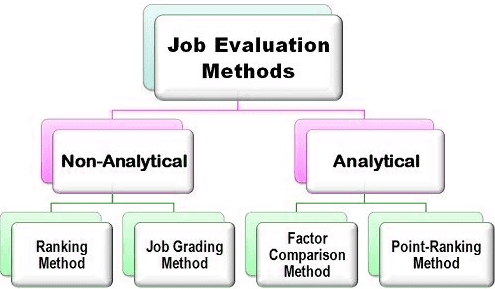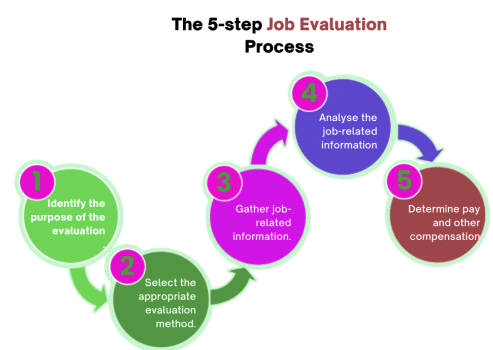Job Evaluation | Crash Course for UGC NET Commerce PDF Download
What is a Job Evaluation?
A job evaluation is a structured process used to determine how much a position should be paid, ensuring that the compensation matches the value the role brings to the company. Various methods are used to assess the job’s worth, not based on the employee holding the position but on the role itself. This process is typically handled by the HR department and often occurs when a company is new or expanding its workforce.
Methods of Job Evaluation

There are two primary categories of job evaluation methods: qualitative and quantitative. Qualitative methods, like job ranking and classification, are quicker but more subjective. Quantitative methods, such as point factor and factor comparison, provide a more detailed evaluation by assessing the skills and responsibilities required for each role. Additionally, an external method called market pricing can be used to compare salaries with similar roles in other companies. Below is a breakdown of each method:
Job Ranking:
- This method involves ranking roles in a hierarchy based on their value to the company or the complexity of their responsibilities. It’s especially useful for smaller companies, as it’s simple to implement and works well for evaluating up to 100 positions. The method can also be applied to reduce positions by identifying similar roles and retaining the ones with the greatest impact. However, job ranking is subjective, so combining it with a quantitative method can improve accuracy.
Job Classification:
- In this method, roles are sorted into predefined categories, such as executives, skilled workers, semi-skilled workers, and unskilled workers. This categorization helps determine the salary range for each group. However, this approach can be limiting and subjective, as it may be challenging to fit all unique roles into set categories.
Market Pricing:
- Market pricing evaluates a role's salary by comparing it to similar positions in other companies. This method uses data from third-party compensation surveys to help establish competitive wages. One drawback is that it doesn't consider internal equity, meaning some employees might receive less compensation compared to their peers if the market rate for their role is lower. To address this, it’s often best to combine market pricing with an internal evaluation method.
Point Factor:
- The point factor method assigns points to each role based on specific criteria such as required skills or job responsibilities. Roles are then ranked according to the total points they receive. This method provides a structured way to evaluate and rank jobs by breaking down their requirements into measurable factors.
Factor Comparison:
- This method combines elements of both job ranking and point factor approaches. Jobs are first ranked based on factors such as required skills or knowledge, and then points are assigned to these factors. The final ranking is determined by the total number of points, providing a more precise job evaluation.
Steps to Create a Job Evaluation Process

Planning Meeting:
- Begin by organizing a planning session or workshop to discuss the scope and approach of the job evaluation. Key topics include budget, timeline, participant roles, methods to be used, and the roles to evaluate. You should also determine how data will be collected and the communication plan. Take your time during this phase to ensure a well-thought-out process.
Design and Develop the Plan:
- In this phase, you design the specifics of your job evaluation plan. For instance, if you’re using the point factor method, you would create the point system here. This is also the stage where you collect and analyze data such as job descriptions and market salaries.
Categorize Roles:
- Using the data from your research, begin categorizing and ranking jobs. This step is often the most time-consuming as it involves constant updates until a final structure is achieved. Some roles may be difficult to categorize, requiring additional discussions with your team.
Communicate and Implement:
- Once the pay structure is finalized, it’s time to implement it. Communicate any pay structure changes to affected employees, either through individual letters, one-on-one meetings, or team briefings. Some employees may express concerns, so offering an appeals process can demonstrate your commitment to a fair compensation system.
|
157 videos|236 docs|166 tests
|
FAQs on Job Evaluation - Crash Course for UGC NET Commerce
| 1. What is the purpose of job evaluation in the context of UGC NET? |  |
| 2. What are some common methods of job evaluation used in organizations? |  |
| 3. What are the steps involved in creating a job evaluation process for UGC NET? |  |
| 4. How does job evaluation help in ensuring fair compensation for employees in organizations? |  |
| 5. What role does job evaluation play in performance management and career development for UGC NET candidates? |  |
















